Exploring the Beauty and Heritage of Traditional Aceh Houses
Last week, I shared a post about my visit to the Aceh Museum, where I discussed various aspects of Aceh's culture such as spices, traditional tools, clothing, and the history of the area. If you're interested in reading more about it, feel free to check this following link, From the Past to the Present: Discovering Aceh's Culture & History through Museums.

I will still tell you about my trip to the Aceh Museum last week, but this time I will focus more on the "Rumoh Aceh" section of the traditional Aceh house. According to various sources, I attempted to research, there are at least three Rumoh Aceh types: The Krong Bade House, The Santeut House, and The Rangkang House. The Krong Bade House is the kind of house that was built on the grounds of this museum.
Krong Bade House, one of Aceh's traditional houses, is a sight to behold. The exterior of the building is striking, with a black color palette that exudes elegance and durability. The house is adorned with intricate Acehnese ornaments, dominated by the colors red, yellow, green, and white. These ornaments add a unique visual appeal to the house and give it a distinct cultural identity.
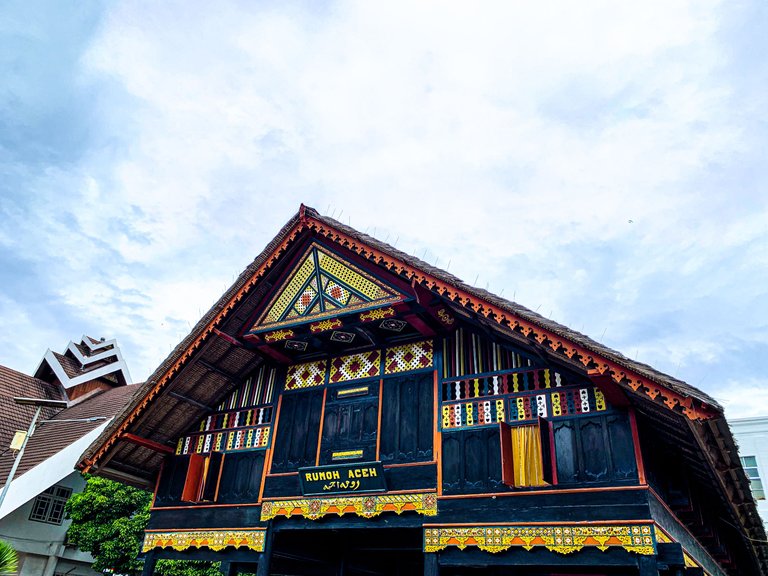
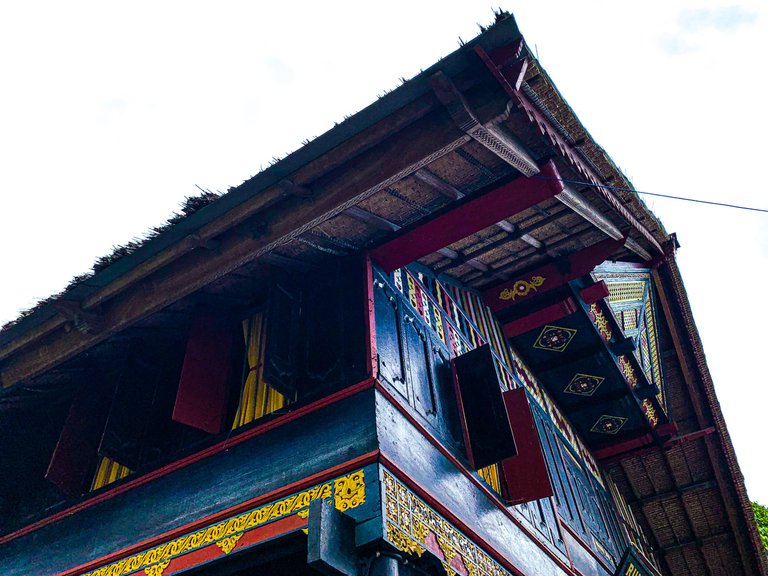 | 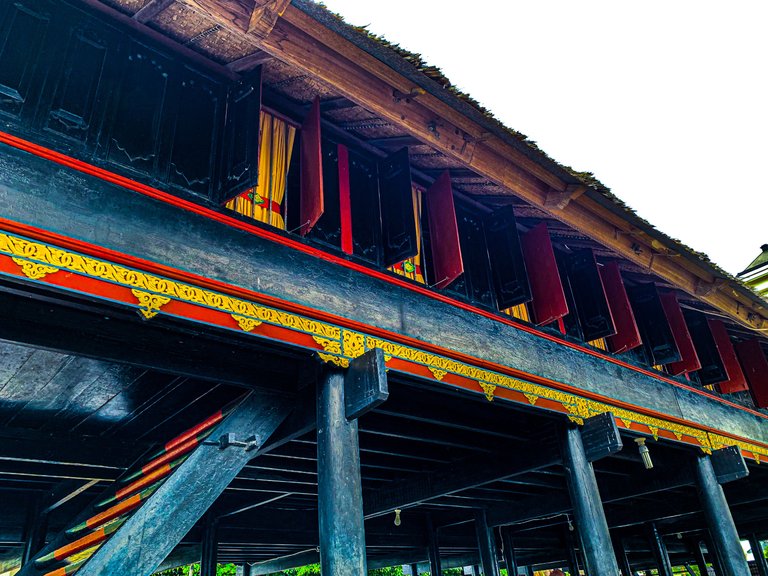 |
|---|
According to some literature, the number of ornaments found on the house can indicate the social status of the homeowner, with more ornaments signifying a respected and wealthy family. The use of black as the base color is not exclusive to Krong Bade House, but it is a common theme among traditional houses in Aceh. This color choice adds to the overall aesthetic and gives the house a sense of timelessness. Overall, the traditional houses of Aceh are a testament to the rich cultural heritage of the region and are well worth a visit.
As additional information, this structure uses the idea of a house on stilts made of natural materials. Magnolia Montana, also known as Meudang Jeumpa in the local language, is the primary type of wood utilized. I once heard from a member of the local community that they use this kind of wood because it is resistant to fire. Moreover, the parts of this magnificent structure are held together without nails. Rattan and palm fiber rope are the binding materials of choice for the community. Sadly, the locals now have a hard time finding this kind of plant.
 | 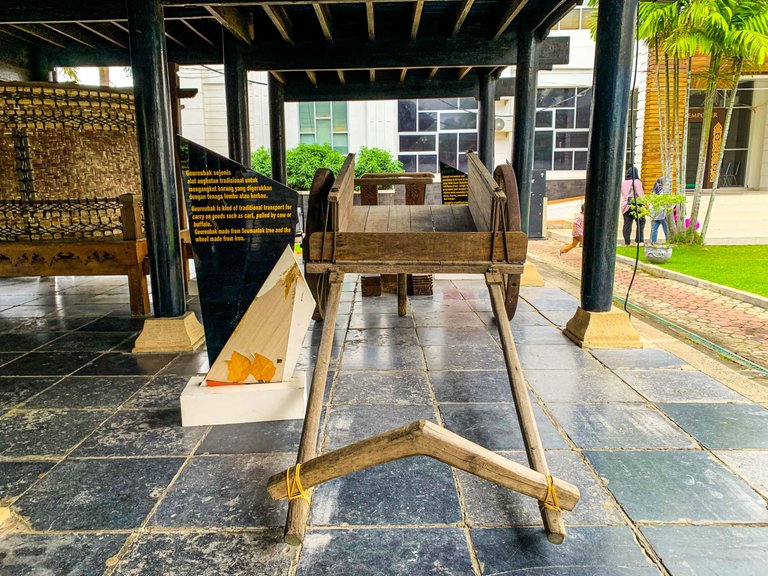 |
|---|
The lower part of the building is used as a place to store tools and crops. The types of commodities commonly found are rice and coffee. For the harvest, they make a large tube-shaped container made of rattan. Tools found can include plowing machines, as well as harvest choppers used to separate grains from their skins.
Access into this building can be done through stairs located at the front and back. The distance between the main building and the ground generally ranges from 2-3 meters, and if I'm not mistaken, the stairs to get into the inside number about 10-15 pieces. The front stairs are on the right side and the back stairs are on the left side of the house. The seuramo keu (front porch), seuramo teungoh (middle porch), and seuramo likôt (back porch) are the three sections that make up the interior of this house.
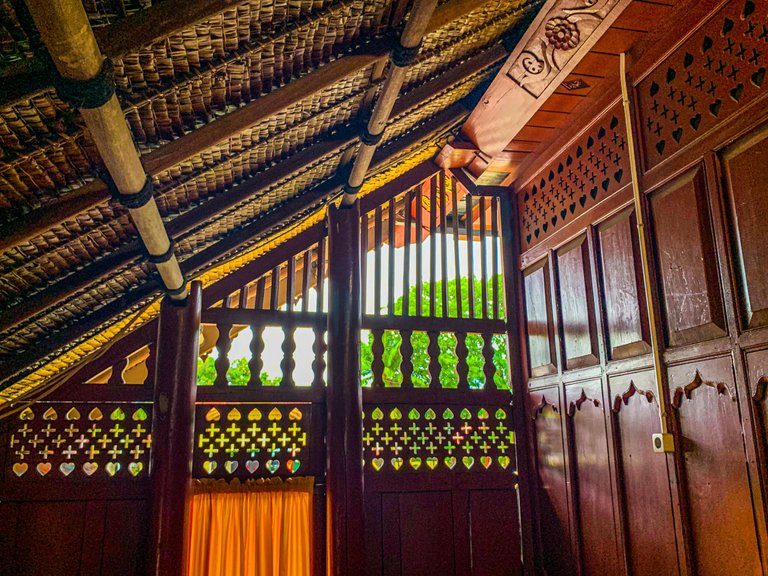 | 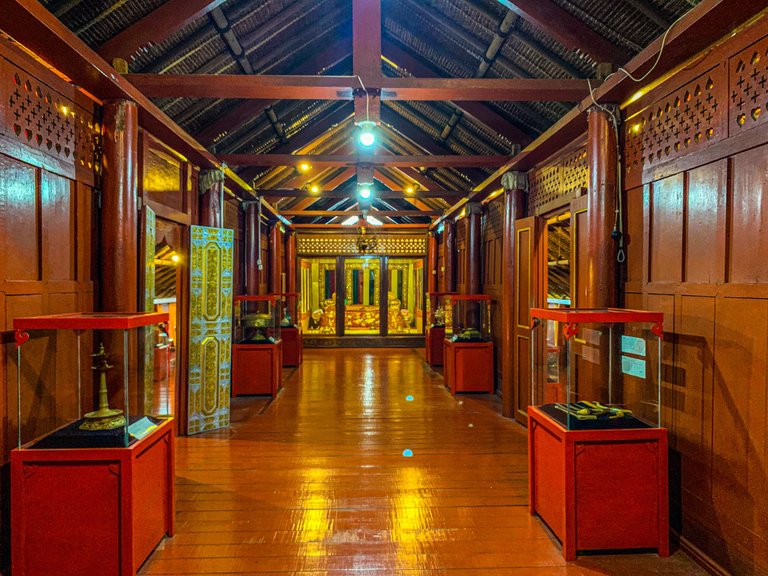 |  |
|---|
Each porch of the house has its own function. The front porch, which is connected to the front staircase, is generally used to receive guests and hold indoor events such as recitation, praying together, and others. Furthermore, the middle porch is the part used by homeowners to carry out their daily activities, where in this section there is a partition used to separate rooms. Furthermore, the back porch is used as a kitchen, dining room, and a place to store other valuables. A little additional information, the front and back porch of this building are in a lower position than the middle porch.
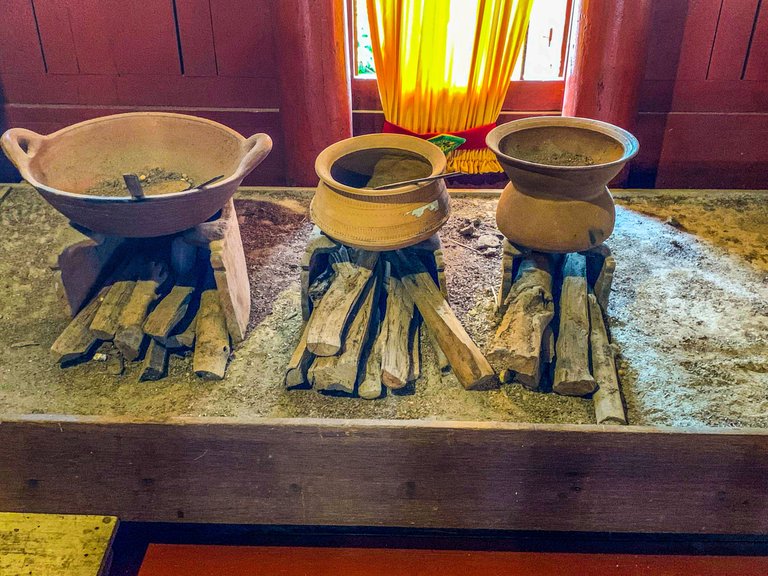 | 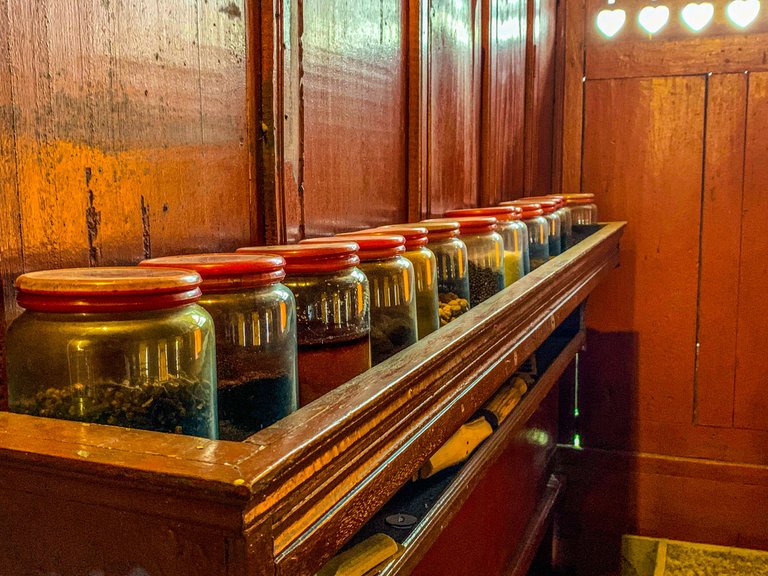 |
|---|
Pottery is still used for kitchen utensils, and cooking is done with firewood. In order to prevent the fire from causing long-term damage to the wood around it, the fireplace's section is lined with quite high sand. Glass jars that were used to store spices and herbs were another thing I saw. Spices are a common ingredient in Acehnese cuisine, giving it a distinctive flavor and aroma.
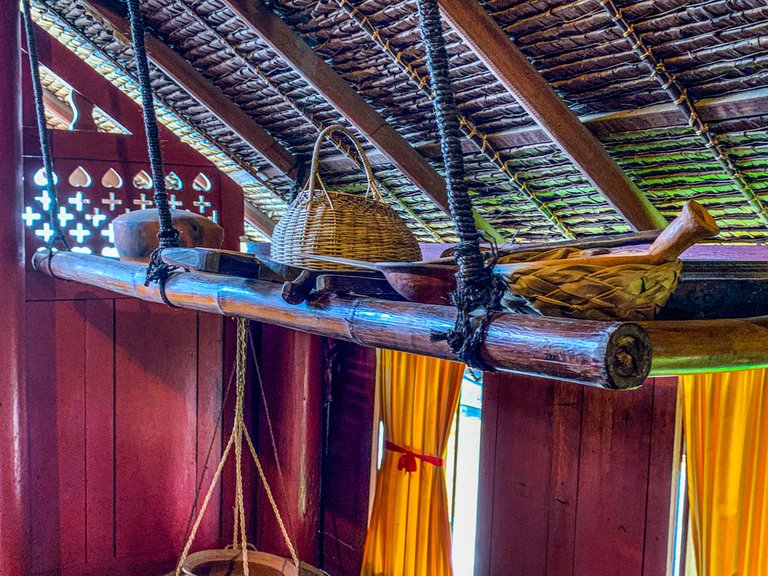 | 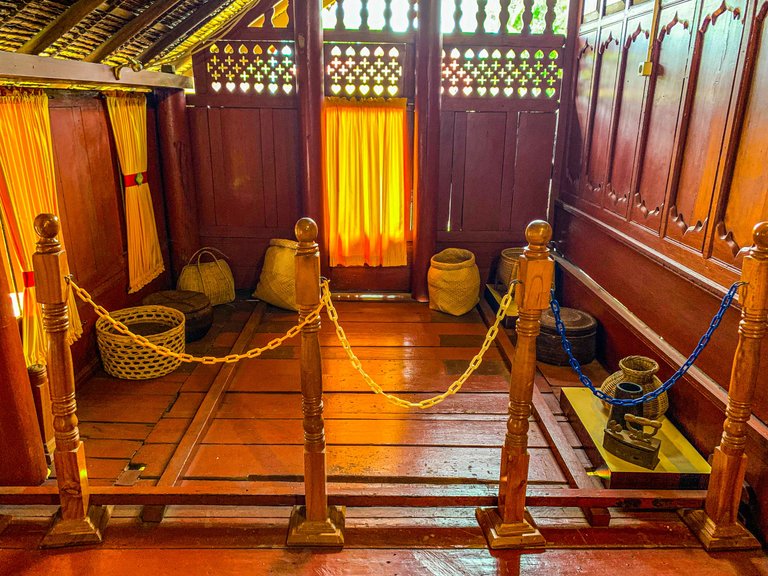 |
|---|
There are two sections to the storage area. A hanging display case is used to store lightweight, small items. In the meantime, heavy and bulky items are kept at the bottom. During this visit, I discovered cooking implements, barrels and sacks containing valuable goods, and an iron that still uses charcoal as its heat source.
Having the chance to see this old house in person made me very happy. I hope that other traditional buildings outside of a museum are in the same state as this one, which is still very well maintained. This building's floor-to-ceiling distance is also quite high, and the house has a lot of windows at the front and back porch, allowing for excellent air circulation.
I'll end this post by sharing a painting that shows how housing was in the past. I want to live in that era and see this picture because it looks so serene to me.
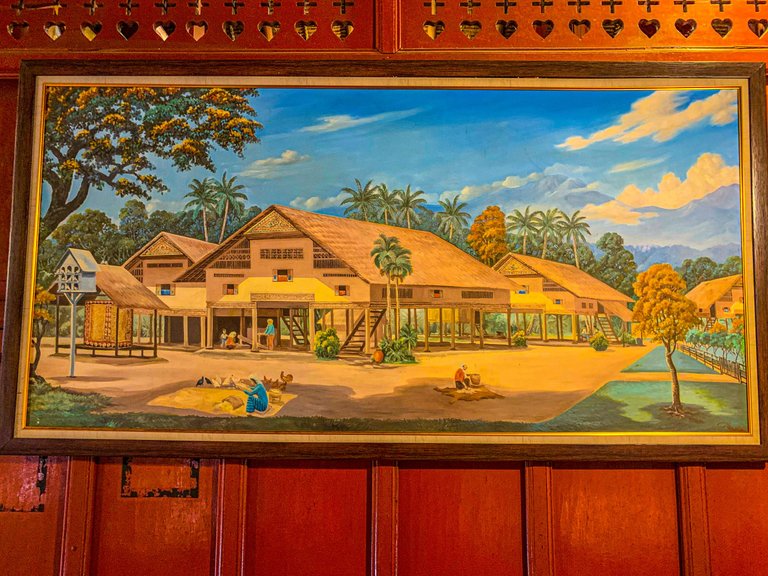
This is my very first contribution to the Architecture+Design Community. I have read the community's rules, and I hope I haven't missed anything. Last but not least, I hope you enjoyed this post and would appreciate it if you could provide some feedback so that it can become even better in the future.
Reference List
https://id.wikipedia.org/wiki/Rumah_adat_Aceh
some information also extracted from local community
Congratulations, your post has been added to Pinmapple! 🎉🥳🍍
Did you know you have your own profile map?
And every post has their own map too!
Want to have your post on the map too?
Yay! 🤗
Your content has been boosted with Ecency Points, by @iqbalnindol.
Use Ecency daily to boost your growth on platform!
Support Ecency
Vote for new Proposal
Delegate HP and earn more